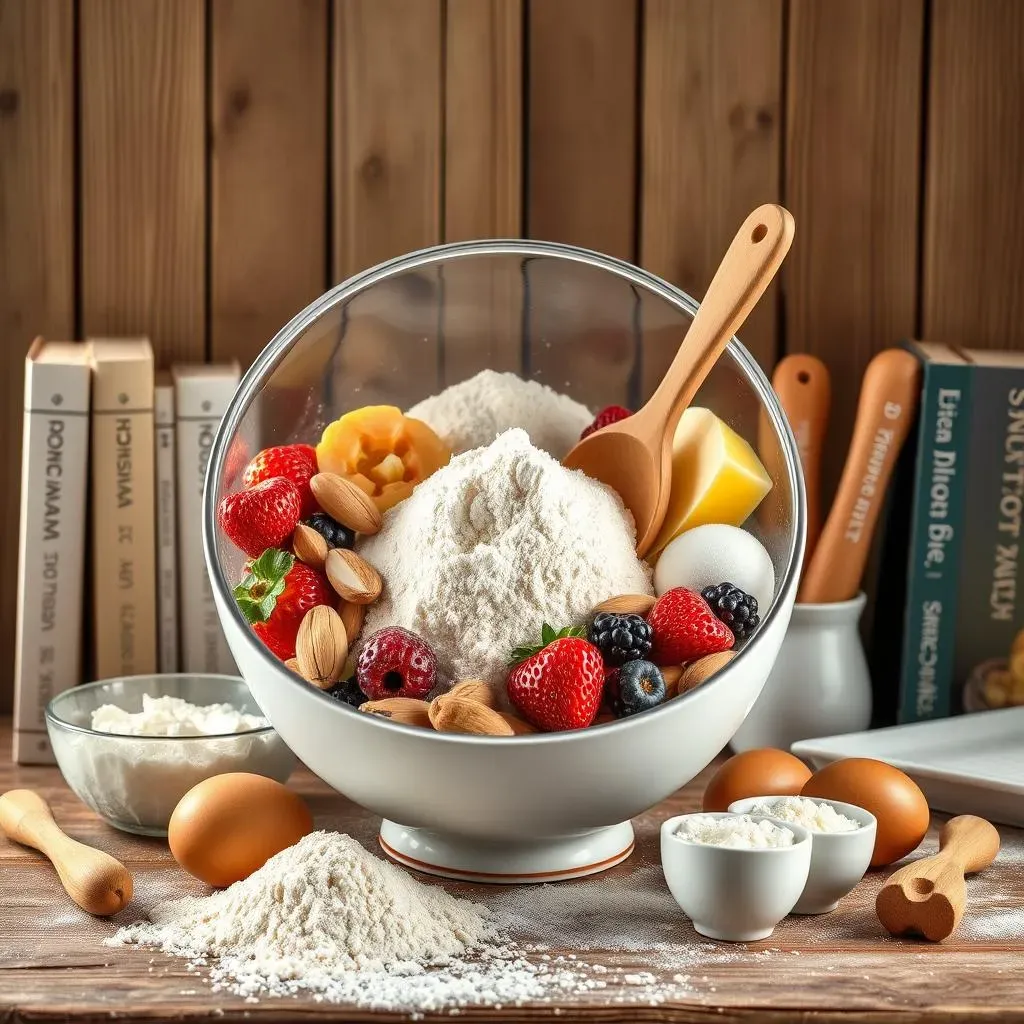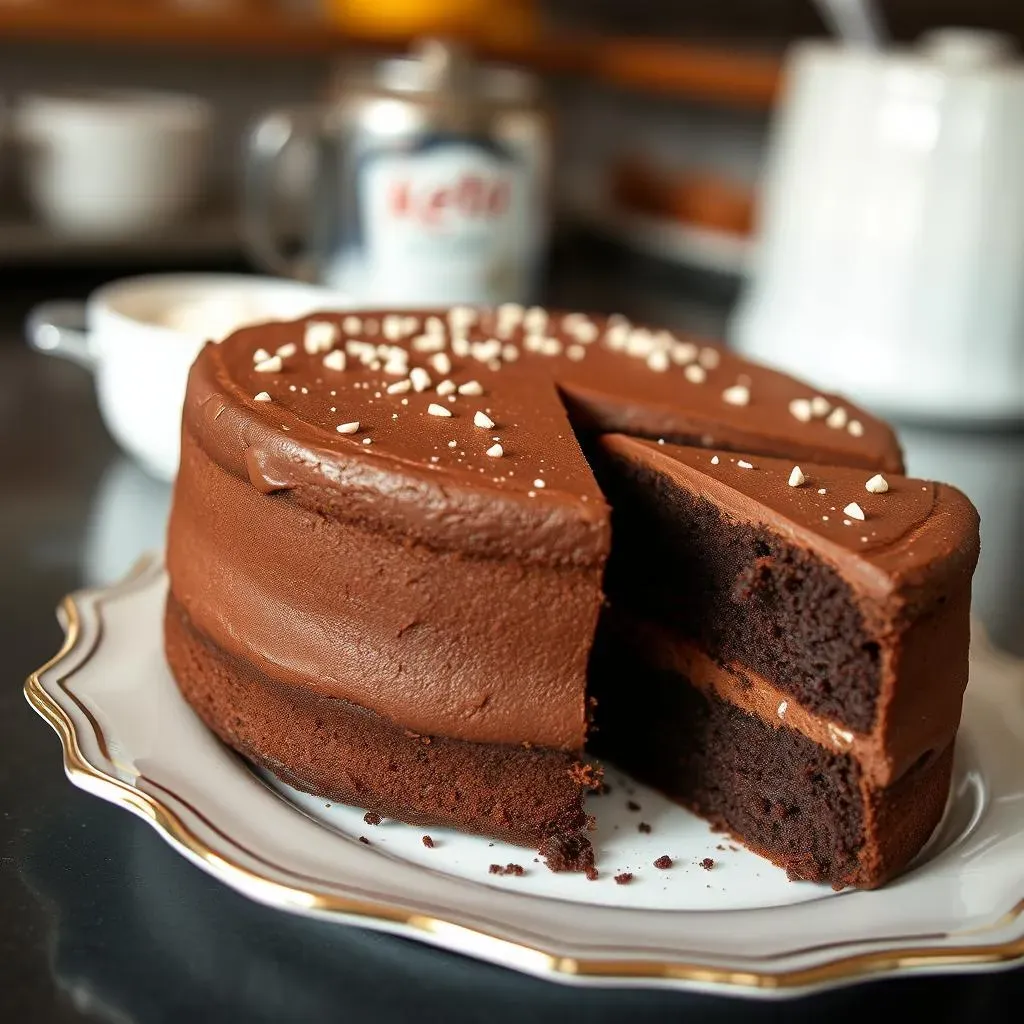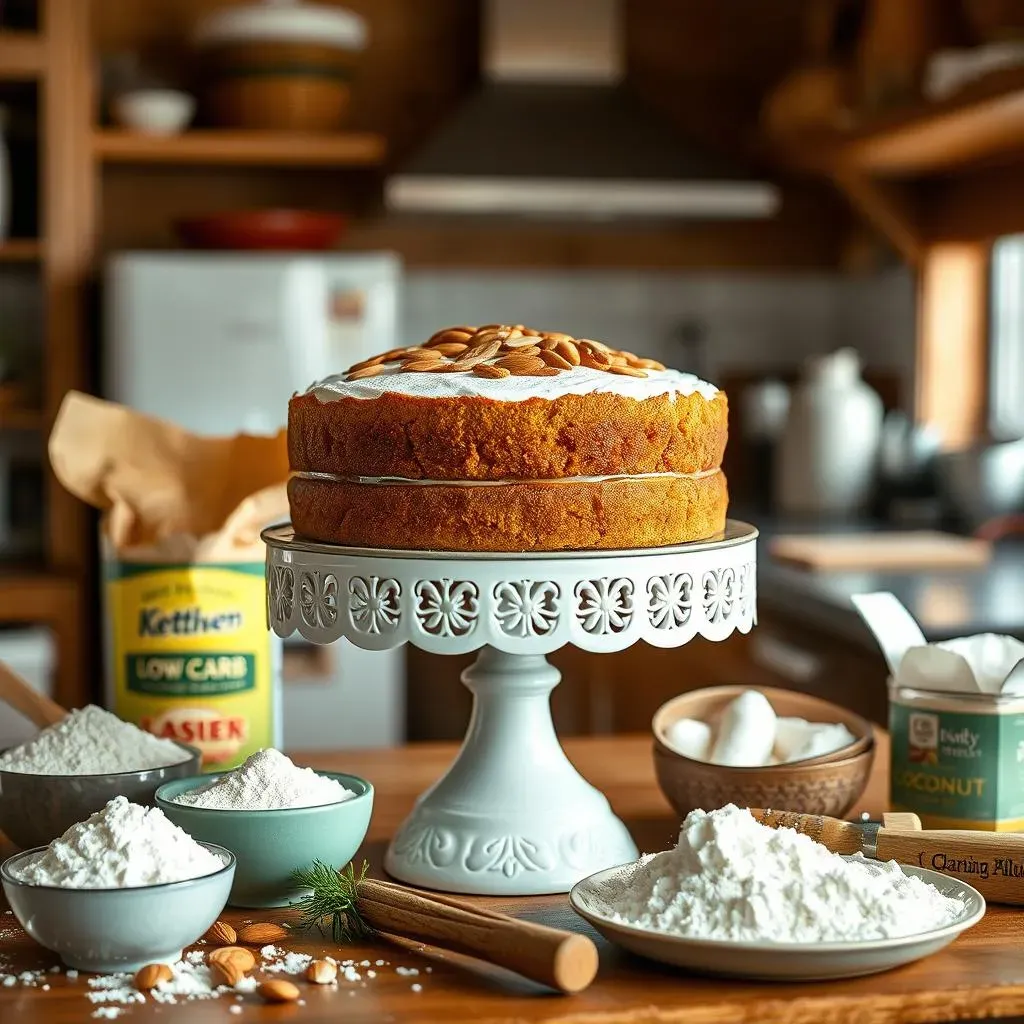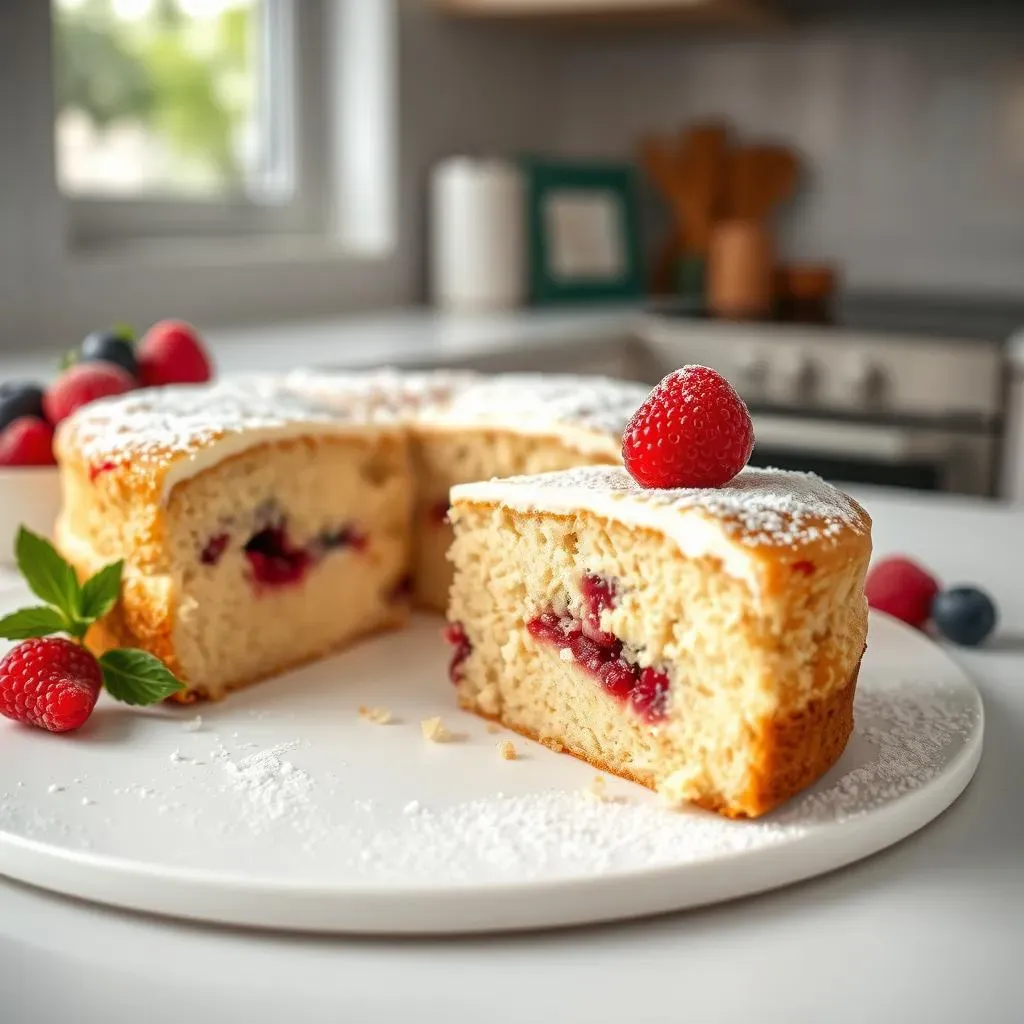Table of Contents
Let's face it: cake is delicious. But if you're watching your carb intake, the question "what cake has the lowest carbs?" might be top of mind. This article is your guide to navigating the world of low-carb baking, helping you satisfy your sweet tooth without derailing your diet. We'll explore the science behind carbs in cake, uncovering the sneaky ways they hide in seemingly innocent ingredients. Then, we'll dive into the delicious world of low-carb cakes, showcasing different options and revealing which ones truly reign supreme in the low-carb kingdom. We'll provide you with practical tips and tricks for making your own low-carb masterpieces at home, including helpful substitutions and baking secrets. Finally, we'll address common concerns and offer tasty alternatives to ensure you can enjoy a guilt-free slice of heaven. Get ready to discover the answer to "what cake has the lowest carbs," and unlock the secrets to low-carb baking bliss!
Understanding Carbohydrates in Cake
Understanding Carbohydrates in Cake
So, you're diving into the world of low-carb cakes? Awesome! Let's start with the basics: understanding carbs in cake. It's not as scary as it sounds. Think of cake as a delicious combination of different ingredients, each contributing its own share of carbohydrates. Flour, whether it's all-purpose, almond, or coconut, is a major carb source. Sugars, obviously, pack a carb punch – whether it's granulated sugar, honey, or even seemingly "healthy" sweeteners like maple syrup. Even seemingly innocent ingredients like fruits (think those blueberries in your muffin) contribute to the overall carb count. The key is to understand that not all carbs are created equal. Some are simple carbs that get digested quickly, leading to a sugar rush and crash, while others are complex carbs that provide more sustained energy. The goal in low-carb baking is to minimize the simple carbs and find ways to substitute them with lower-carb alternatives.
Ingredient | Type of Carbohydrate | Carb Impact on Cake |
|---|---|---|
All-purpose flour | Complex carbohydrate | High carb content, provides structure |
Sugar | Simple carbohydrate | High carb content, sweetness |
Fruits (berries, etc.) | Simple and complex carbohydrates | Moderate carb content, flavor and moisture |
Almond flour | Complex carbohydrate | Lower carb content compared to all-purpose flour |
Now, let's talk about net carbs versus total carbs. Total carbs are the sum of all carbohydrates in a food. Net carbs, however, subtract the fiber and sugar alcohols. Why does this matter? Because fiber is beneficial for digestion and sugar alcohols don't impact blood sugar as much as other sugars. When looking at low-carb recipes, you'll often see net carbs listed, giving you a more accurate picture of the carb impact on your body. It's like this: you're not just counting all the apples in the basket; you're also considering how many are bruised and won't actually be eaten.
- Total Carbs: The total amount of carbohydrates in a serving.
- Fiber: A type of carbohydrate your body can't fully digest. It's subtracted from total carbs to calculate net carbs.
- Sugar Alcohols: Sweeteners that have fewer calories and less of an impact on blood sugar than regular sugar.
- Net Carbs: Total carbs minus fiber and sugar alcohols. This is the number that matters most for low-carb diets.
What Cake Has the Lowest Carbs? Exploring LowCarb Options
What Cake Has the Lowest Carbs? Exploring LowCarb Options
Keto Cakes: The Reigning Champions
When it comes to low-carb cakes, keto cakes are often the stars of the show. These cakes typically rely on almond flour, coconut flour, or a blend of both, as the base. They often utilize sugar substitutes like erythritol or stevia for sweetness, minimizing the carb impact. You'll find a wide range of keto cake recipes, from classic chocolate to decadent cheesecakes, all designed to satisfy your sweet cravings while staying within your carb limits. Remember, always check the nutritional information of specific recipes, as carb counts can vary depending on the ingredients and portion sizes.
Cake Type | Primary Flour | Sweetener | Approximate Net Carbs per Serving (may vary) |
|---|---|---|---|
Keto Chocolate Cake | Almond Flour | Erythritol | 3-5g |
Keto Vanilla Cake | Coconut Flour | Stevia | 2-4g |
Keto Cheesecake | Almond Flour (in crust) | Erythritol | 4-6g |
Flour Power: Exploring Low-Carb Flour Alternatives
The type of flour you use dramatically impacts the carb count of your cake. Traditional all-purpose flour is a major carb contributor. Switching to lower-carb alternatives like almond flour, coconut flour, or even a combination of both, significantly reduces the overall carb load. Almond flour provides a slightly nutty flavor and a tender crumb, while coconut flour results in a denser, more cake-like texture. Experimenting with different flour blends allows you to fine-tune the texture and flavor of your low-carb cake to your liking. Remember to adjust liquid amounts when switching flours, as different flours absorb liquid differently. It's like baking with different types of sand – the amount of water needed to create a good consistency will vary.
- Almond Flour: Nutty flavor, tender crumb.
- Coconut Flour: Denser texture, slightly sweet taste.
- Oat Flour (check carb count carefully): Can be used sparingly for added texture.
Beyond the Basics: Other Low-Carb Cake Considerations
Beyond flour and sweeteners, other ingredients can significantly affect the carb count of your cake. For instance, using full-fat dairy products like cream cheese or butter adds richness and moisture without significantly increasing the carbs. Adding things like unsweetened cocoa powder, spices, or extracts can enhance flavor without adding significant carbs. Consider using sugar-free chocolate chips or adding nuts for extra flavor and texture. Don't be afraid to experiment! The beauty of low-carb baking is the opportunity to get creative and discover new flavor combinations that are both delicious and healthy. It's like creating a culinary masterpiece using only the finest, lowest-carb ingredients.
Making LowCarb Cakes: Recipes and Tips
Making LowCarb Cakes: Recipes and Tips
Mastering the Art of Low-Carb Substitutions
The key to delicious low-carb cakes lies in smart substitutions. Forget the traditional all-purpose flour – we're embracing almond flour, coconut flour, and their delightful blends. Almond flour creates a tender crumb, perfect for delicate cakes. Coconut flour, on the other hand, lends a denser, more cake-like texture. Experimenting with ratios is half the fun! A 50/50 blend often strikes a great balance. But don't stop there; explore other low-carb alternatives like flaxseed meal or sunflower seed flour for unique textures and subtle flavors. Remember, each flour absorbs liquids differently, so adjust your recipe accordingly. It's like learning a new language – you'll need to adapt your approach to achieve the desired outcome.
Flour Type | Texture | Flavor Profile | Liquid Absorption |
|---|---|---|---|
Almond Flour | Tender, delicate | Slightly nutty | Moderate |
Coconut Flour | Dense, cake-like | Subtly sweet | High |
Flaxseed Meal | Slightly dense | Nutty, slightly earthy | High |
Sweetening the Deal: Low-Carb Sweeteners
Sugar is the enemy in low-carb baking, but fear not! A whole world of delicious sugar alternatives awaits. Erythritol and stevia are popular choices, offering sweetness without the carb overload. Erythritol has a clean, subtle sweetness and blends well in cakes. Stevia, known for its intense sweetness, requires careful measuring. Monk fruit sweetener is another excellent option, offering a mild sweetness similar to sugar. Experiment to find your favorite. Remember, these sweeteners may affect the final texture and moisture of your cake, so adjusting liquid or adding a bit of fat can help. It’s a bit like finding the perfect spice blend – a little experimentation goes a long way.
- Erythritol: Mildly sweet, blends well.
- Stevia: Intensely sweet, use sparingly.
- Monk Fruit: Mild sweetness, similar to sugar.
Baking with Confidence: Tips for Low-Carb Success
Low-carb baking might seem daunting, but it's all about understanding the nuances of low-carb ingredients. Don't be afraid to experiment! Start with a trusted recipe and make small adjustments to find what works best for you. Pay close attention to baking times and temperatures, as low-carb cakes may cook differently than traditional cakes. Use a toothpick or cake tester to check for doneness – you want it to come out with just a few moist crumbs attached. And most importantly, have fun! Embrace the process of discovery and enjoy the delicious results. Low-carb baking is a journey, not a race, so savor each step of the way.
What Cake Has the Lowest Carbs? Delicious Alternatives and Considerations
What Cake Has the Lowest Carbs? Delicious Alternatives and Considerations
Beyond the Traditional Cake: Exploring Delicious Alternatives
Let's be honest, sometimes you crave that classic cake experience, but with fewer carbs. Don't despair! There are plenty of delicious alternatives that can satisfy your sweet tooth without derailing your diet. Think about cloud cakes, which use whipped egg whites as their base, creating a light and airy texture with minimal carbs. These airy delights are surprisingly satisfying, and you can easily customize them with low-carb sweeteners and flavorings. Then there are fat bombs – small, intensely flavorful treats that are high in healthy fats and low in carbs. While not exactly cakes, they can serve as a satisfying, low-carb dessert alternative. You can even explore recipes that use alternative flours like chickpea flour or even cauliflower to create a cake-like texture with a lower carb count. The possibilities are endless!
Alternative | Carb Content | Texture | Flavor Potential |
|---|---|---|---|
Cloud Cake | Very Low | Light and Airy | Highly Customizable |
Fat Bombs | Very Low | Dense and Rich | Chocolate, peanut butter, etc. |
Chickpea Flour Cake | Low-Moderate | Dense and Moist | Savory or Sweet |
Portion Control and Mindful Indulgence: The Key to Low-Carb Success
Let's be real: even the lowest-carb cake can still pack a carb punch if you eat an entire one in one sitting. Portion control is your secret weapon in the battle against carb overload. A small slice of a low-carb cake can be a perfectly acceptable treat, satisfying your cravings without derailing your progress. Focus on savoring each bite, appreciating the flavors and textures. Mindful eating helps you enjoy your dessert without overindulging. Pair your cake with a refreshing beverage, like unsweetened tea or sparkling water, to further enhance the enjoyment and prevent overeating. Think of it as a mindful meditation session disguised as dessert time!
- Start with a small portion.
- Savor each bite slowly.
- Pair with a non-caloric beverage.
- Listen to your body's fullness cues.
Recipe Adjustments and Personalization: Your Low-Carb Baking Journey
The beauty of low-carb baking is its flexibility. Don't be afraid to experiment and adjust recipes to your own preferences and dietary needs. Want to add a bit more almond extract to your keto chocolate cake? Go for it! Feel like swapping out the erythritol for stevia? Give it a try! The most important thing is to find what works best for you and your taste buds. Baking is a creative process, so embrace the experimentation and discover your signature low-carb cake creations. Remember, it's your journey, and your taste buds are your guide. The more you experiment, the more you'll learn, and the more delicious your low-carb cakes will become!
